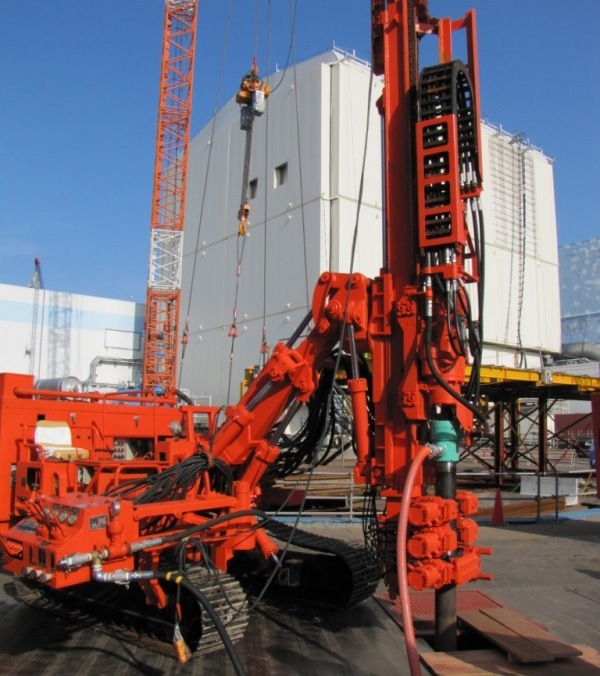The Tokyo Electric Power Company (Tepco) has been told to re-examine its attempt to create an ice wall around the crippled reactors of the Fukushima Dai-Ichi nuclear power plant.Â
The instruction was delivered on Monday by Japan’s Nuclear Regulation Authority (NRA) which is concerned that the container of frozen soil around the partially melted reactors has not yet formed three months after work began.
The NRA ordered Tepco to increase the freezing power of its machinery. It is particularly concerned by the ice failing to contain a 5m2 tunnel filled with heavily contaminated water leading into the number one reactor, which is the one that suffered the greatest damage in the 2011 tsunami.Â
Tepco had hoped to block this tunnel with the ice, remove about 11,000 tons of radioactive liquid from it and replace it with concrete.

A Tepco drilling unit beginning work on the ice wall in April
Tepco has explained that the water is difficult to freeze because it is flowing at a rate of 2mm a minute. Toyoshi Fuketa, a member of the NRA, told Japan News: “It’s strange that flow on such a scale should prevent the freezing.”
The NRA has commented that the failure to freeze the tunnel made it impossible to create the ice wall around the reactor buildings and that TEPCO should “double or triple” its freezing capabilities.
Meanwhile, there are reports that Tepco has been forced to switch off the cooling system at the number five reactor after it was discovered that it had been leaking water. The decision was taken after engineers discovered that 1,300 litres of water had leaked from a cooling system intended to stabilise the temperature of the reactor, which was offline at the time of tsunami, but still loaded with fuel rods.
The source of the leak is understood to be a 3 mm-diameter hole near a flow valve, according to a statement released by Tepco on Sunday. If no water is pumped over the next nine days, the reactor may reach a threshold temperature of 65°C, above which dangerous reactions may take place.










